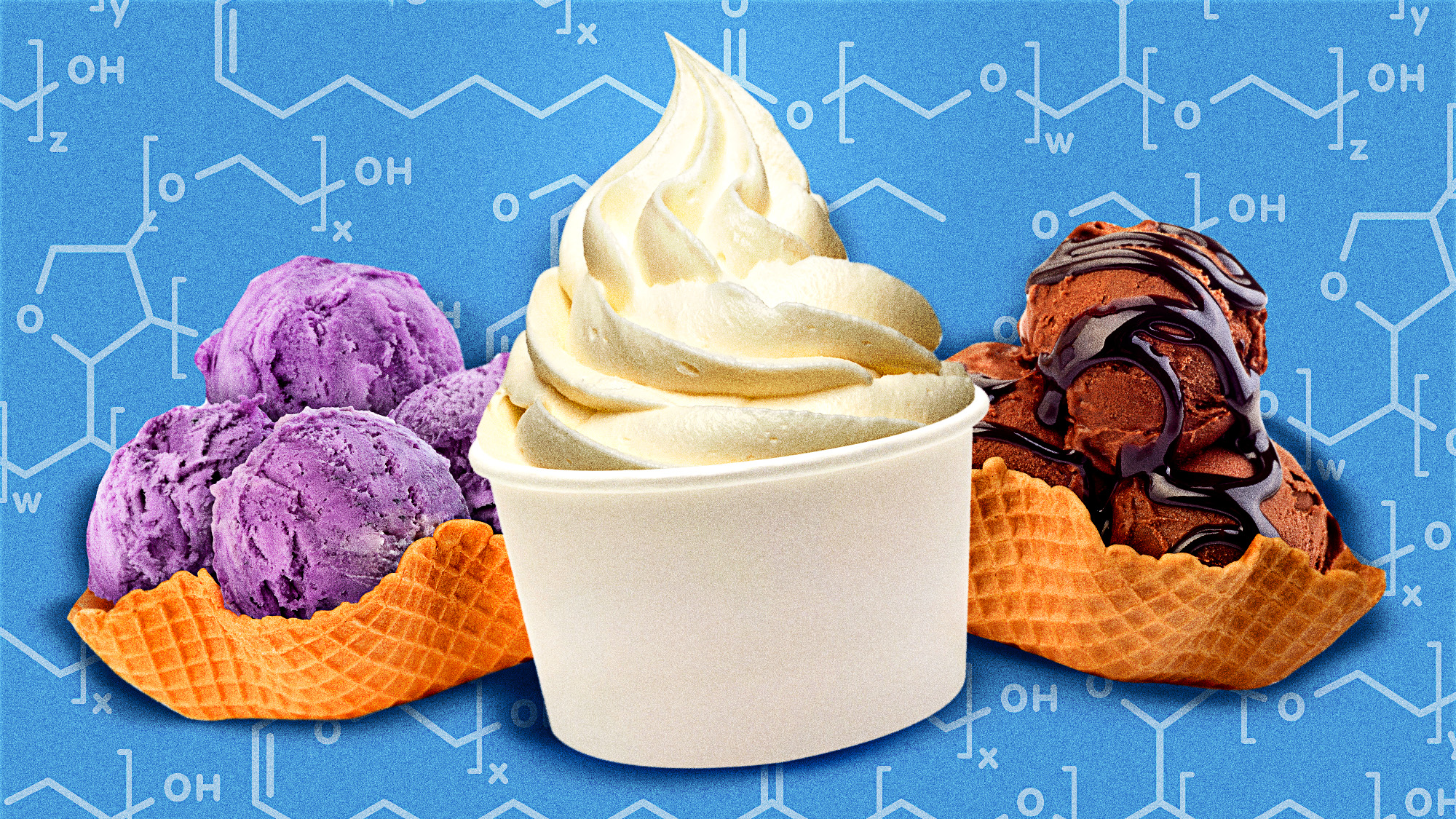What Is Polysorbate, And Why Is It In My Food?
Welcome to another installment of Ingredients Decoded, where we check the ingredients label on a packaged food, arbitrarily select something we don't understand or cannot pronounce, and figure out what it actually is. Is it good? Is it bad? We don't know! That's something that scientists and "wellness gurus" can argue about. We just want find some basic answers so that you may jump to your very own wild conclusions.
This week we're looking at the wild world of polysorbates, the mysterious, highly nefarious-sounding ingredient that's found practically everywhere in your daily routine: medications, vitamins, contraceptives, body wash, shampoo, vaccines, and, of course, food. Its extreme usefulness means you probably recognize the name, either because you've seen it on countless ingredient labels or because you've seen someone posting "urgent warnings" on Facebook about how your ice cream is "made from birth control pills" and will make you get every disease at the same time. Not only are those sorts of claims false, but they're built on idiotic logic. Think of it like this: Water is the main component in, well, water, which is good for you. Water is also the main component in bleach. Is your drinking water made of bleach? No. You are too smart to be falling for these sorts of shenanigans, peddled by hucksters and flimflam men across the internet. You are the type of person who is smart and rational, who reads the entire article before sharing bad science on social media. You should be proud.
Here's the highly scientific, smarty-pants answer to our question: Polysorbates are emulsifying agents. They are ethoxylated sorbitan esters made by the esterification of fatty acids with sorbitol-derived cyclic ethers that are polymerized with ethylene oxide. The number the follows "polysorbate" refers to the number of oxyethylene groups in the resulting molecule, which is dictated by the fatty acid used. Polysorbate 20 is made from lauric acid; polysorbate 40 from palmitic acid; polysorbate 60 from stearic acid; polysorbate 80 by oleic acid.
Now, here's the dumbed-down version of the above for people who, like myself, understood almost none of it:
Polysorbates are lab-made emulsifiers that make incompatible substances, like oil and water, stick together. Pretend that water is a two-pronged electrical outlet and oil is a three-pronged plug—no matter how much force you use, you're never going to be able to jam that plug into the wall socket. The only way you can bring the outlet and plug together is by using an adapter between them. In the language of chemistry, this is an emulsifier. One side of a polysorbate molecule can bond with a water molecule, the other side can bond with oil molecules. What polysorbate has joined, let no man put asunder.
Now to decode how polysorbates are synthesized, which is the part where some words, when taken out of context, can sound terrifying and cancer-ish: Fatty acids are, simply, the building blocks of fat. There are bajillions of them in your body right now, and they're found in just about everything you eat. Sorbitol is a sugar-derived alcohol that is also naturally occurring. Esterification is what happens when an acid and an alcohol react with each other through a catalyst—that is, a substance that gets introduced to get the party started, but doesn't form any bonds itself or change its chemical composition in any way. When a polysorbate gets made, that catalyst is ethylene oxide, and, on its own, ethylene oxide is one damn scary mofo.
Synthesized in a lab and primarily used in industrial applications, ethylene oxide is a chemical that is extremely dangerous on its own: It is highly flammable, emits toxic vapors, and can cause serious burns, miscarriages, and, with prolonged, repeated exposure, several different types of cancer. If considered out of context, then, yeah, ethylene oxide in your food should absolutely scare the pants off of you. The thing is, when it comes to polysorbates, most of the ethylene oxide is removed once the catalytic reaction is completed, and though it's unavoidable that trace amounts will be left behind, those amounts are negligible. The FDA already requires that the amount of polysorbates in food be extremely low; the numbers vary depending on the product in question, but so you get an idea, in one if its most popular applications—ice cream—the amount used cannot be more than 0.1% of the total volume. Of that, the amount of ethylene oxide permitted in the polysorbate ranges from 1-10 parts per million. So, yeah, you're safe on this one.
As for ice cream, the inclusion of polysorbates really does make a good thing even better. It prevents the milk proteins from completely coating milk fats, which allows them to firmly stick together in a pattern that holds even after air is churned in, creating an ice cream that is smooth, silky, and resistant to melting. It's brilliant for creating foams and stabilizing any products that have air whipped into them, which is why you'll find it in whipped creams, shortenings, and in the kitchens of many fancy molecular-gastronomy-inspired restaurants. It could even be in your kitchen, too, if you so choose. Just don't go chugging down the whole bottle.
